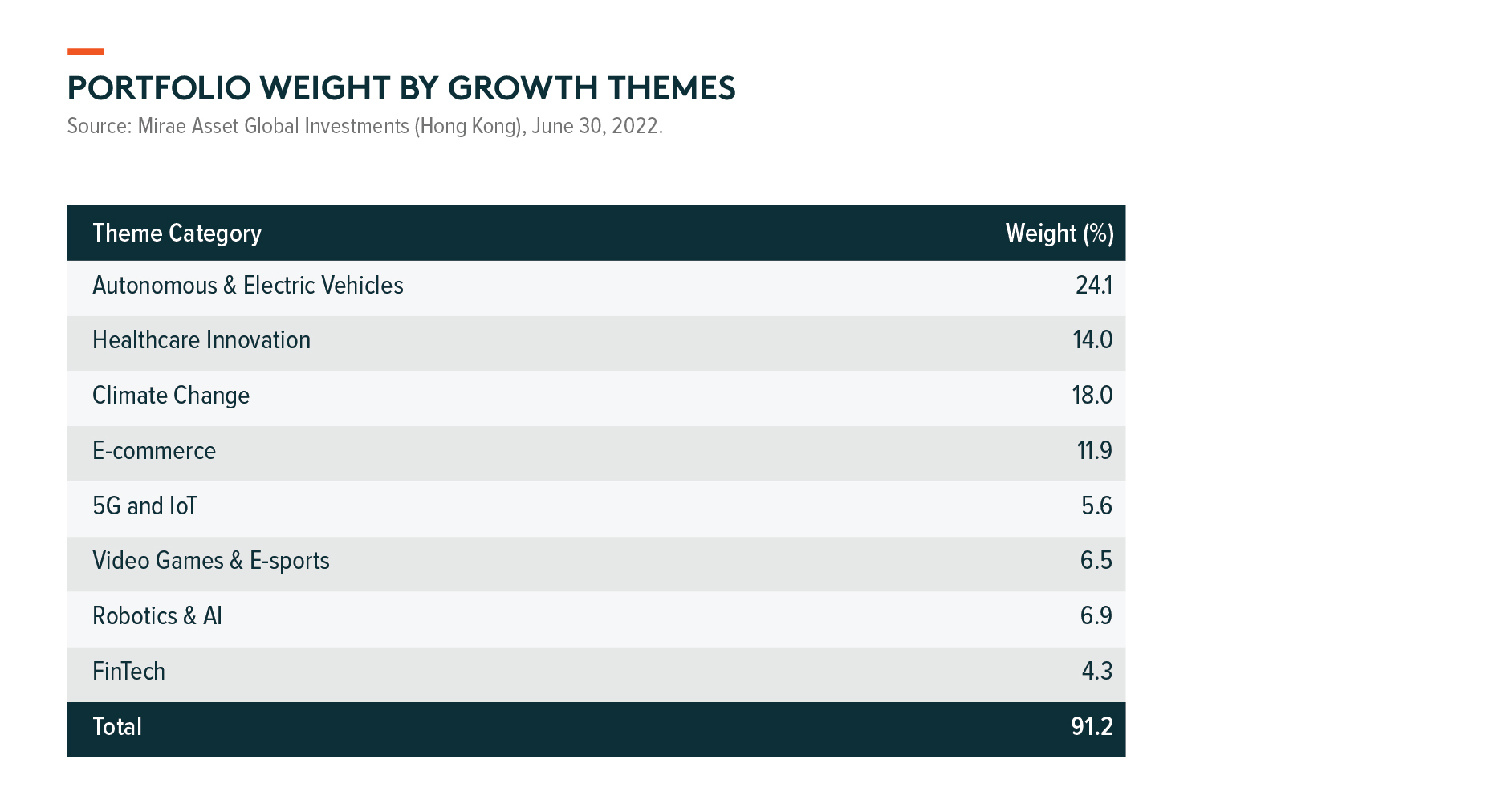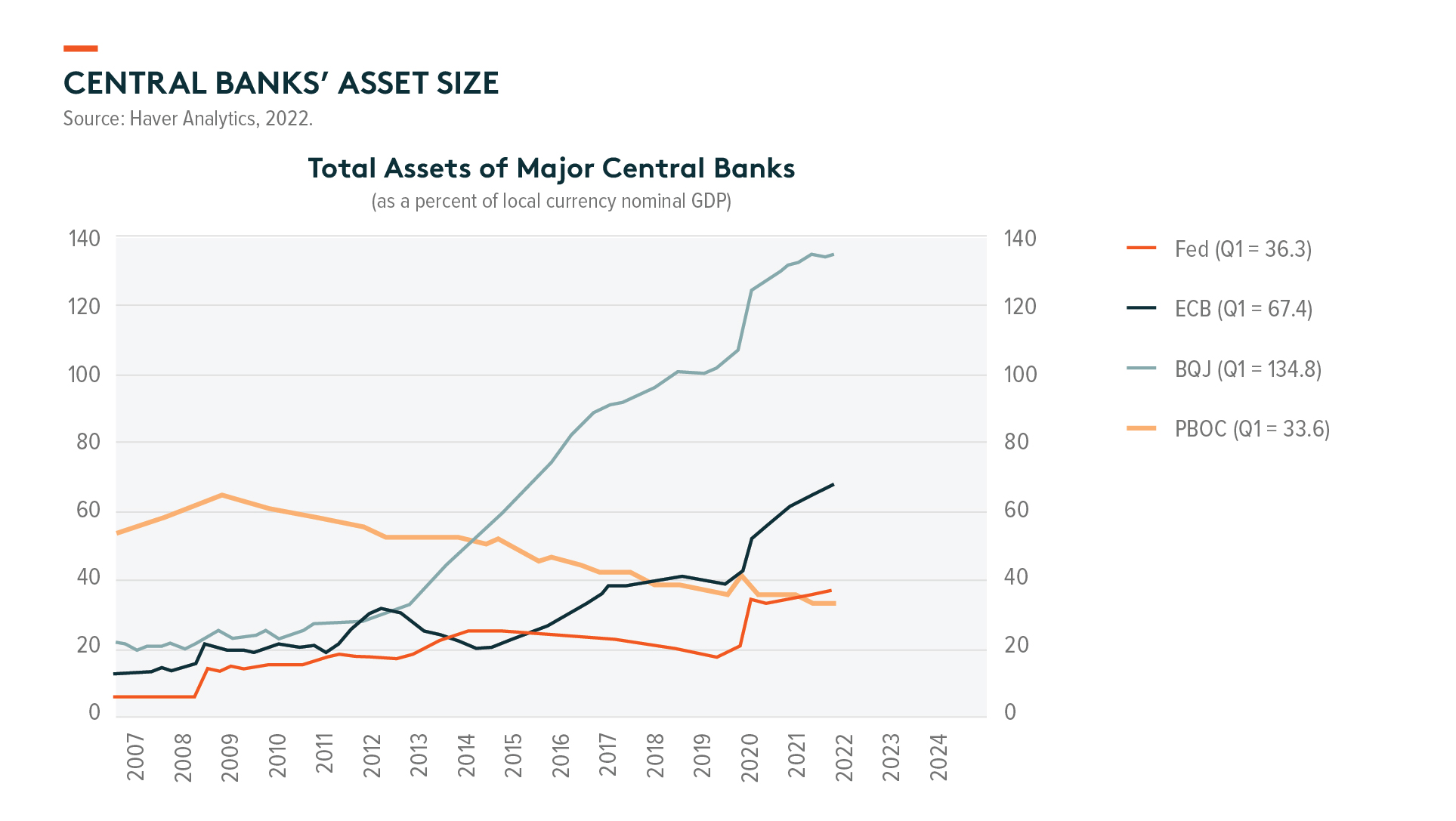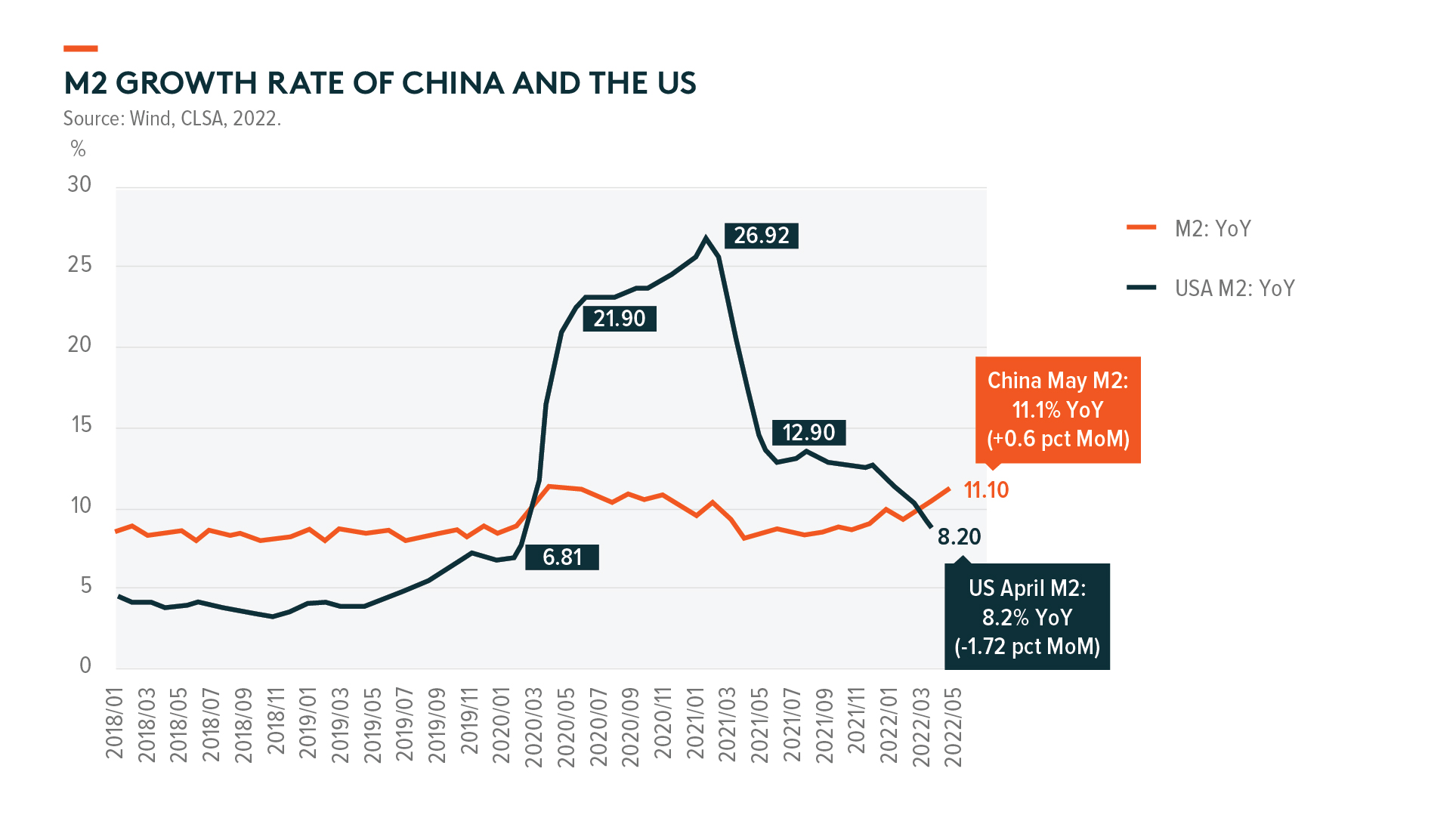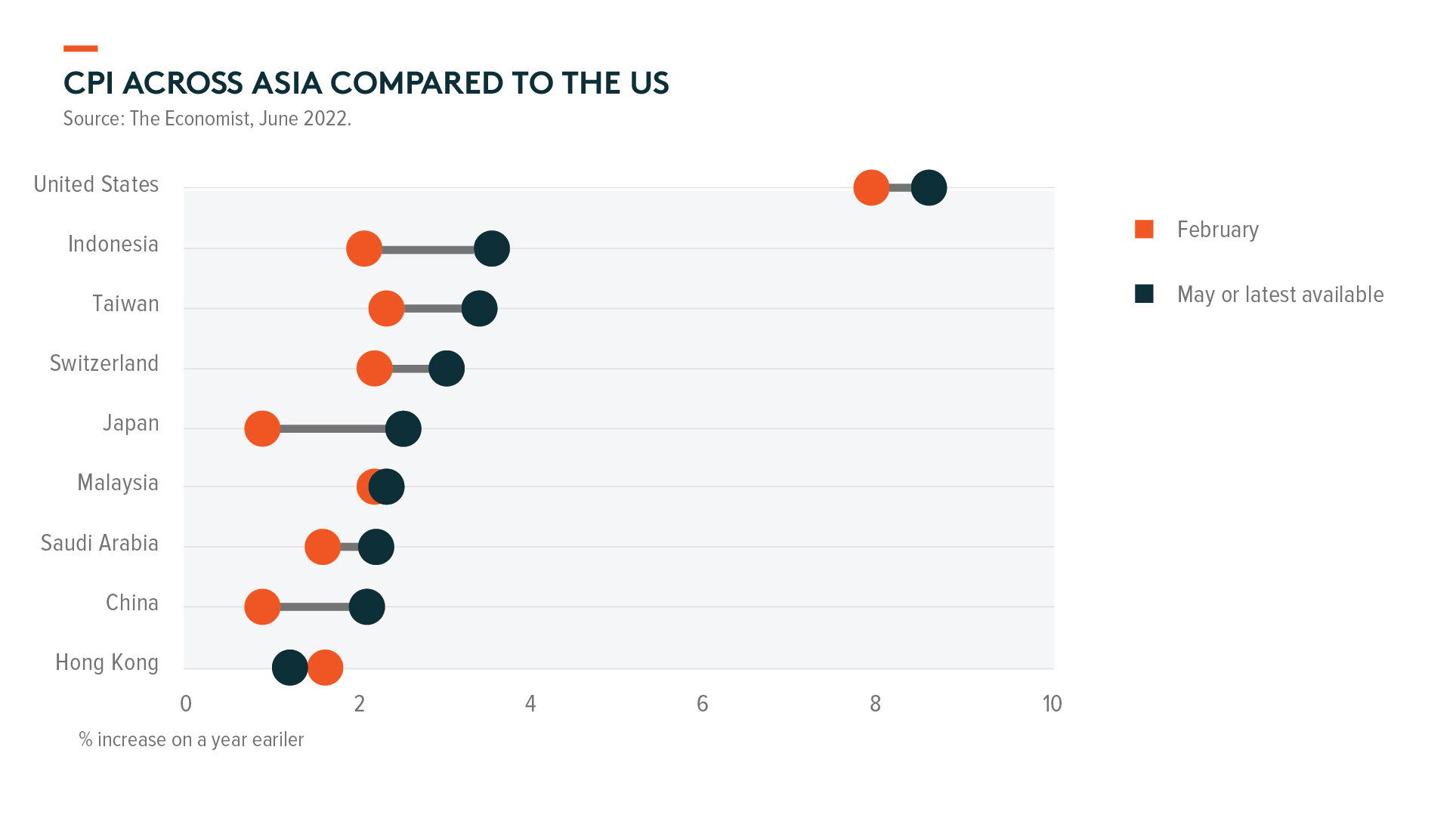China Innovator Active: Q2 2022 Review
Chinese markets have been volatile during the second quarter of 2022. Earlier in the quarter, the market was hammered by the tragedy in Ukraine and Shanghai’s two-month-long lockdown. The portfolio suffered as EV batteries and all growth stocks plummeted, as the price of raw materials rallied on speculation of supply shortages.
However, later in the quarter, most of our holdings recovered thanks to the economic recovery after Shanghai’s lockdown was dissolved and raw material cost pressures were reduced.
After suffering depressed economic conditions for over one and a half years due to the regulatory overhang, the zero-Covid induced lockdown, and property industry deleveraging, we are now turning more positive towards China’s stock markets. Our optimism is driven by a number of factors, including 1) regulation on internet businesses has largely been completed, 2) we don’t expect another lockdown at the scale of Shanghai’s in the near future, and 3) the government has a strong incentive to boost the economy ahead of its most important political events in November 2022.
Within the portfolio, we maintain meaningful exposure to the growth themes of Autonomous & Electric Vehicles, Healthcare Innovation, and Climate Change, among others.
EV Battery Stocks Withstanding the Biggest Risk
For some time, EV battery experts have warned that the supply of key materials like lithium and cobalt might not be sufficient, leading to sharp cost increases. As a result, demand for EVs may be sluggish, and the battery supply chain may experience a margin squeeze.
That’s exactly what happened in H1 2022 when lithium prices increased seven-fold in just 12 months to March 2022. Naturally, the share prices of relevant stocks were corrected between January and April.
However, to the surprise of many, we witnessed that the EV penetration story didn’t stop; instead, it gained momentum. In China, the EV (+PHEV) penetration ratio reached 26% in May 2022, up from 20% in December 2021. There were two backdrops to this rise. First, while EV battery cost was rising, maintenance costs for traditional engine vehicles rose at nearly the same rate. In China, retail gasoline prices increased 60% y/y between March 2021 and June 2022. In simple math terms, we found that the maintenance cost gap widened to nearly USD 2,000 per annum between EVs and ICE vehicles when considering June fuel prices.
Second, consumers now feel familiar with and are more comfortable buying EV models, regardless of cost. This is because consumers have started to appreciate the various value propositions of EVs, ranging from design, acceleration function, wider interiors, and camping usage, among many others.
Therefore, after withstanding the biggest risk, we’ve now gained more confidence that EV penetration will be maintained in the foreseeable future.
Can China Win With a Zero-Covid Policy?
Like most observers, we don’t fully understand why China still maintains a draconian zero-COVID policy while new COVID variants have become less fatal. At least, however, we now have a better understanding of what is required for the zero-COVID policy to be successful: quick detection of those infected and immediate partial lockdowns.
Shanghai suffered a two-month-long total lockdown while China’s equity market corrected even more on fears that Shanghai’s demise might repeat in other cities. However, we found that it’s less likely for a total lockdown to occur in other major cities.
In hindsight, Shanghai, a city with 27 million residents, wasn’t ready to fight the Omicron variant that had spread much faster than Delta because the city officials kept the same protocols that worked well whilst Delta was dominant. In contrast, Shenzhen updated its protocol to keep the Omicron variant at bay. Firstly, the city reduced the number of test kits in one go which helped to identify infected individuals much quicker. Secondly, it immediately implemented partial lockdowns when a cluster was found. The result was quite encouraging – Shenzhen’s city suffered only a one-week total lockdown in late March and recovered to normal economic activity soon after.
After identifying which policy against the virus is most effective, most cities in China now follow the Shenzhen-style model: very quickly identifying those infected and quick lockdowns for the affected region. That’s why we don’t expect another disastrous Shanghai-like lockdown, though partial lockdowns will occasionally occur.
China Less Likely Under Inflationary Pressure
Inflation fighting and the subsequent recession risk have become a major headwind for global equity markets this year. Luckily, or unusually, China doesn’t seem to be affected by inflation this year.
Other than the tragedy in Ukraine and COVID-led supply disruptions, the main cause of current inflationary pressure originated from the advanced economies’ excessive fiscal and monetary policies over the last two years. During the early days of COVID fighting, aggressive handouts and subsidies in the US were successful in boosting the economy and labor market. However, it eventually contributed to elevated and excessive demands for goods, port congestion, and inflation1. Therefore, in a bid to cool down inflation, the US has turned to introduce certain cooling measures like rate hikes.
To the surprise of many, and also differing from prior actions during the GFC, China didn’t do as much to boost its economy over the last two years. This was due to the government’s continued focus on its deleveraging campaign in the property industry and other over-supplied industries. The Chinese government also introduced lots of regulations on internet businesses, resulting in halted business decisions and hiring cancellations. On top of that, China’s zero-COVID policy lowered the chances for money multipliers to rise even though the central bank loosened its monetary conditions. In aggregate, these actions suggest that China has been under a tightening economic mode over the last two years. New total social financing (TSF) growth rate, a popular gauge of liquidity conditions, was -10% in 2021.
As a result, China now has only about 2.5% CPI in June, while US CPI reached 9.1%. We expect China can manage CPI to around 3% by the end of the year, given the crack in the labour market.
Largely speaking, the Asia region has similar features to china, as most of them have been less generous in handing out subsidies. As such, inflation pressures should be less severe than in the US and Europe, which are also more directly affected by Russia’s invasion of Ukraine. In absolute terms, the inflationary environment is not good for Asia. In relative terms, however, Asia is better positioned than other major markets over the coming quarters.
On China Exporters
However, cooling down in the US might lead to weaker demand for goods and inventory correction for Asian exporters. That’s the reason why Vietnam has suffered a sharp correction, as the small economy is highly dependent on global trade (its trade value was more than 100% of GDP in 2021). Korean and Taiwanese markets also corrected on the general fear of a looming semiconductor down cycle.
Differing from the market’s perception, however, China’s equity market doesn’t have much exposure to exporters, because its vast domestic market makes up the majority of revenue sources for almost all Chinese stocks. Of course, several core holdings like CATL (battery maker) and LONGi Green Energy (solar) have sizable exposures to overseas markets, but their demand doesn’t seem to be affected by the consumption of general goods.
View on Industrial Metal Prices and Their Impact on Manufacturers
We have a view that metal and commodity prices might diverge. Crude oil supply will still be in a fragile condition due to issues in Russia. On the contrary, other industrial metal prices are likely to pull back, mainly due to China’s prolonged property market downturn.
We are sure that the Chinese government will look to boost infrastructure investments in 2022 H3, but that’s not enough to fill the gap from the investment shortfall in China’s property. We welcome the recent correction in metal prices as many of our holdings, such as EV batteries, the solar, wind, and automation will enjoy a greater margin upside.





